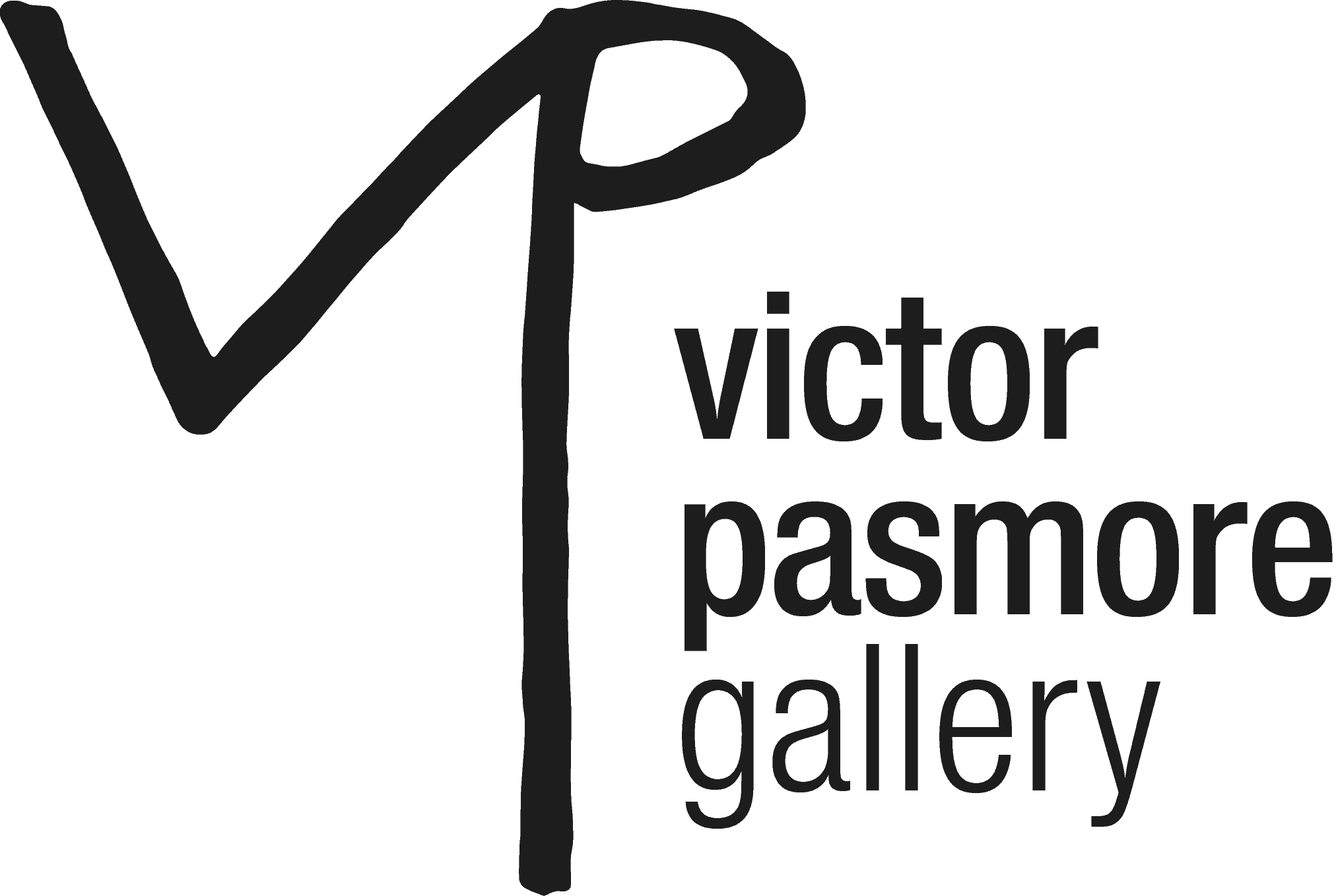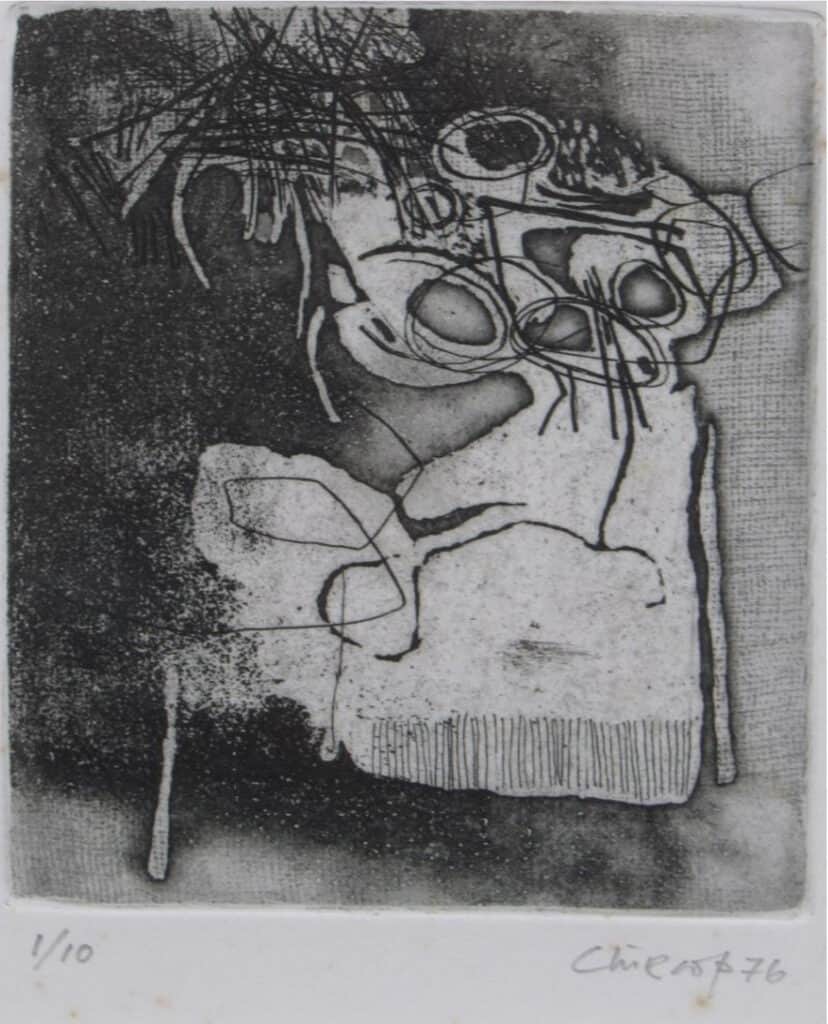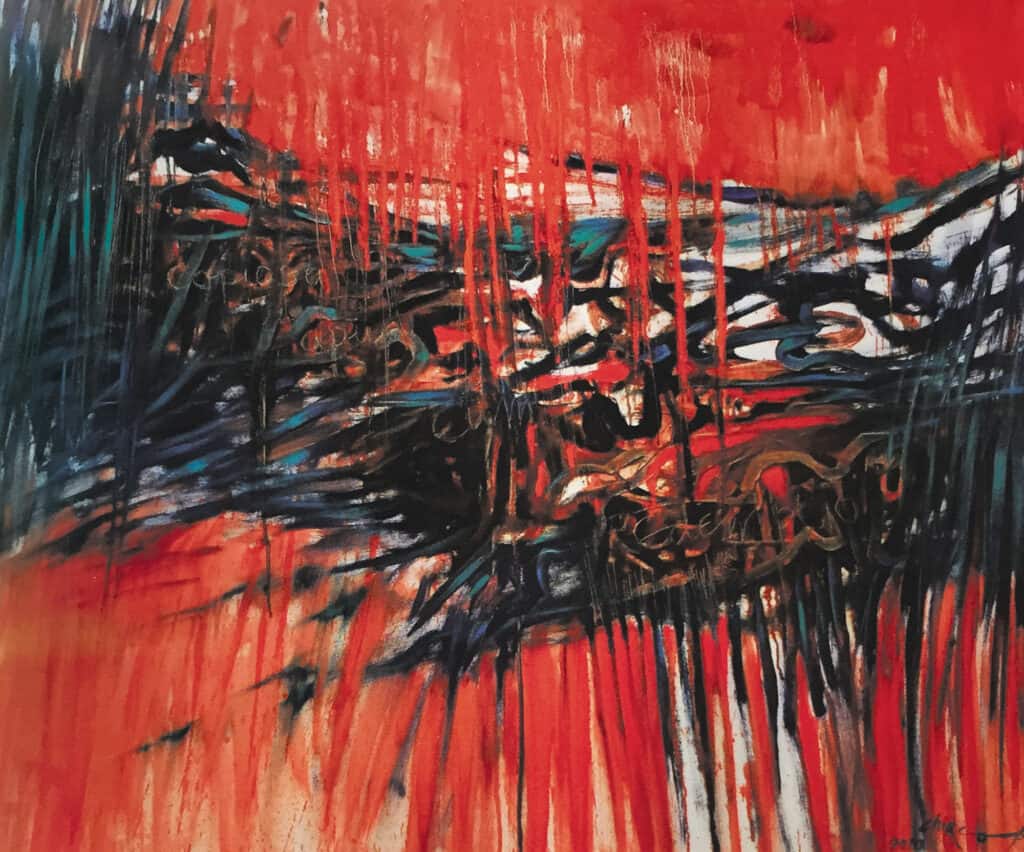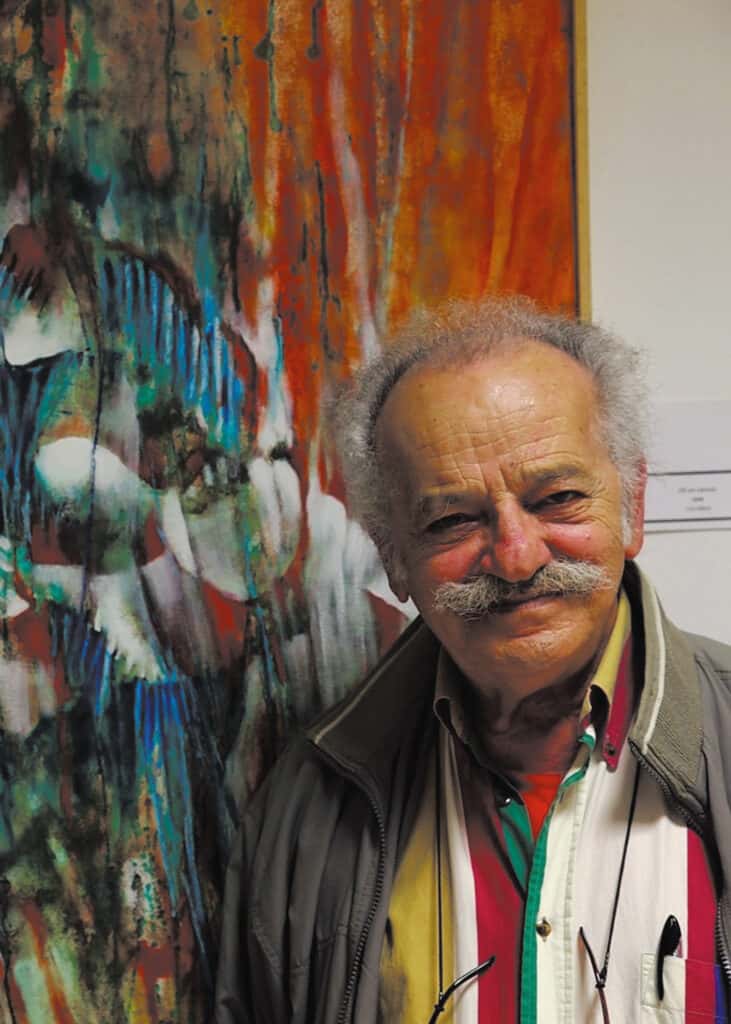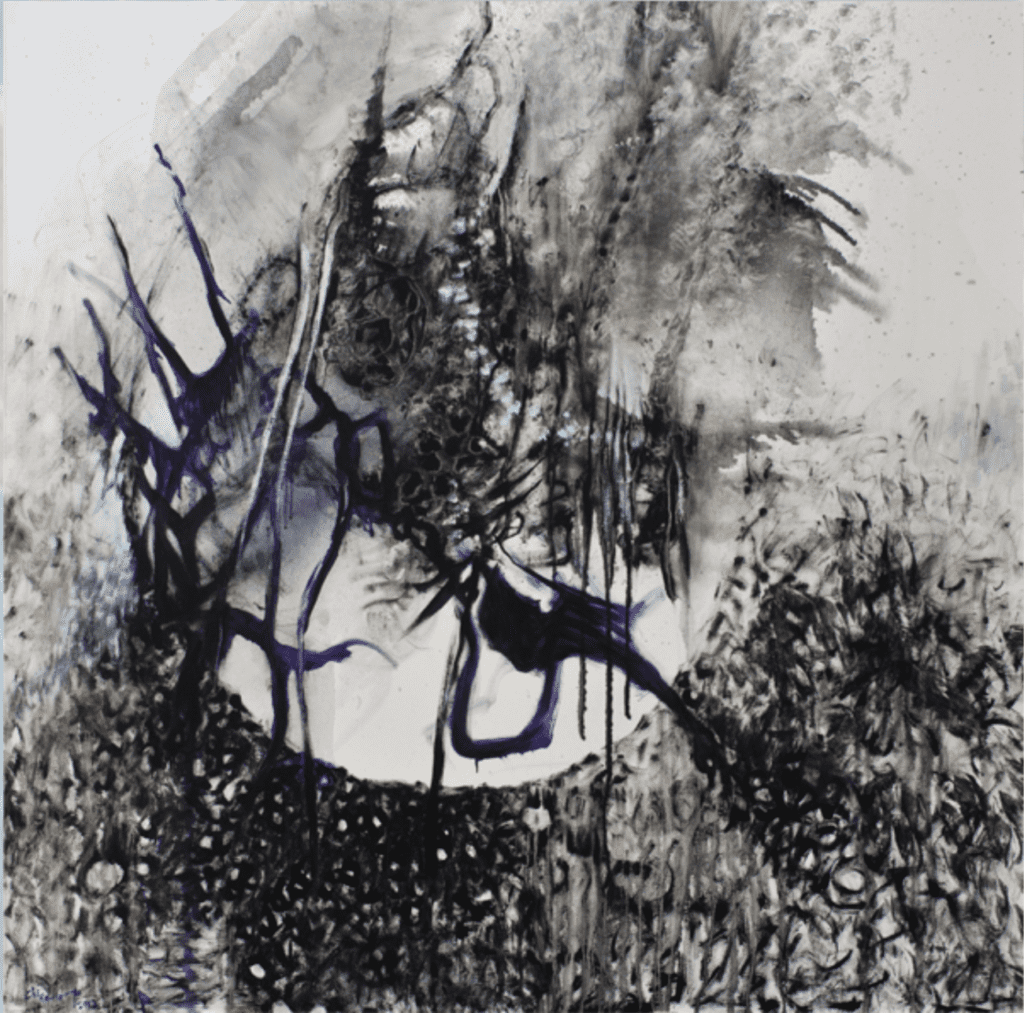Alfred Chircop was a prolific Maltese painter, etcher and educator, who was renowned as being a master of technique and a luminary of modern and contemporary abstract art in Malta. Chircop began to convey interest in the arts from a very early age and began to manifest his natural artistic talent with his early works, including a portrait drawing of Lord Fort, Governor of Malta from 1942 to 1944. This portrait conveys impressive artistic understanding and skill and was produced still at the tender age of eleven years old. He received his early artistic training under his uncle Paul, and then furthered his studies at the Malta Government School of Arts, Valletta, between 1944-1960. During this period, he was awarded two scholarships which enabled him to further his studies overseas, and thus expose him to the international artistic context. He first relocated to the UK, where he studied at the Bath Academy of Art, Corsham, from 1960-61. Shortly after, he then moved to Rome and studied at the Accademia di Belle Arti in Rome, under the guidance of Franco Gentilini (1909-1981). Whilst in Rome, Chircop began to exhibit in several collective exhibitions, and also held two solo shows. He remained in Rome until 1964, and then returned to Malta where he joined the Department of Education and pursued a career as an art teacher. In this year, he also married Margaret Luckcuck, whom he met whilst studying at the Bath Academy. In this position, he worked his way up to Senior Lecturer in the Faculty of Arts at the University of Malta; a position from which he retired in 2001.
Adjacent to his career as an art educator, Chircop continued to develop, and excel, in his own individual artistic practice. Stylistically, Chircop’s works undeniably convey the influence of his experiences in studying abroad. For these reasons, Chircop is considered as a pioneer in the developing style of abstract art in Malta, and he was known to have been the first to have exhibited non-representational artworks on the Maltese Islands. However, his works delve beyond the non-representational. Although at times his paintings appear to have been spontaneously executed, they are the result of a creative process focused on deep meditation. Interestingly, Chircop is also known to have enjoyed painting whilst listening to classical music, so his choice of music would no doubt have influenced the outcome of his work. Perhaps, it is precisely this meditative quality that explains the mesmerising effects such works have on the viewer. At times, his paintings were used as settings on Italian national television (RAI), and his etchings were used as images in motion during a ballet sequence on local television.
Chircop was also very active in artistic circles. He was a member of the Midland Group of Artists and of the International Association of Artists. Moreover, was permanently represented at Galleria Il Tabernacle, Rome. Alfred Chircop was a master of colour, form and composition, who talents and artistic legacy were often awarded throughout his lifetime. He received the Medaglia di Bronze at the Mostar Internazionale (Pittura Estemporanea), Sperlonga in 1962, and the silver medal at the XIV Fiera d’Arte in Rome, 1963. Locally, he was also awarded the Premio Città di Valletta and the Premju Gharfien Kulturali, in 1990 and 2005 respectively. Moreover, in 1998 he was honoured by the Republic of Malta with the distinction of Member of the Order of Merit in recognition of his contribution to Maltese art. Due to his artistic practice and dedication towards education in art, this resulted in Chircop being one of Malta’s most distinguished artists, who had a very long and illustrious career and left a profound impact on the development of abstract art in Malta until this very day.
